Did you know that music can promote speech and language skills? In this podcast, you’ll learn how music therapy can help with behavioral issues, social skills, and how you can incorporate elements of music therapy into your speech sessions. The best part? My guest Stephanie Leavell has generously compiled ten FREE songs that we can use in our sessions! Tune in below to learn more and be sure to check out the links and resources section at the bottom of the page!
Links & Resources
- The Digital SLP Membership
- Website: Music For Kiddos
- Stephanie Leavell’s IG Page
- Amazing Songs For SLP Sessions (including ‘Grateful Heart’)
Full Transcript of Podcast: What Speech Therapists Need to Know About Music Therapy
Episode 67: What Speech Therapists Need to Know About Music Therapy
Jessica Cassity: You're listening to the Speech Space Podcast, a podcast full of tips and resources for SLPs. I'm your host, Jessica Cassity, and this is Episode 67. Hello. Hello, everyone! Today we are going to be talking about music therapy and why it is so beneficial, with board-certified music therapist, Stephanie Leavell. And I just have to say, Stephanie is one of my new favorite people. Her voice is absolutely amazing. And if you're listening to this podcast during the school shutdowns because of COVID, she actually is doing a Facebook Live every Wednesday at 1:00 PM Eastern Time. And she comes on there and she sings songs for the kids and it's so interactive and fun. And my kids personally love it so much. So we're just so grateful that she's doing that. So you can check her out, Music For Kiddos is her Instagram handle. And hopefully, you'll be able to tune in and get to enjoy that as much as I have been enjoying that with my kids. The other amazing thing that Stephanie did is she put together a collection of 10 songs for SLPs to use, and she is sharing that with us on Google drive. So stay tuned at the end of the episode. I let you know how you can access that folder that she so generously put together for us. Before I bring Stephanie on this show, I did want to let you know that this podcast is brought to you by The Digital SLP membership site, which is a site that features digital interactive speech therapy materials that are all teletherapy platform-friendly. Due to the current need for teletherapy resources, The Digital SLP membership is currently open for purchase. So if you'd like to learn more head on over to thedigitalslp.com/digitalslp. All right, let's go ahead and bring Stephanie on the show. Hey Stephanie, thanks so much for coming on the show today.
Stephanie Leavell: Thank you for having me. I'm happy to be here.
Jessica Cassity: Yeah. So am I, and I wanted to start off just really, basically going over what music therapy is. A backstory real quick. I was talking to my husband at dinner about having you on the show and he's like, so you're a speech therapist. You teach people how to speak on their speech. And so he's like, so she teaches them how to do music better? So I was like, we definitely need to go over like a nice explanation.
Stephanie Leavell: Yeah. So the very bare-bones explanation of music therapy is using music to achieve non-musical goals. So we're not concerned with how the music sounds at all. We, I, you know, I am as the music therapist because I want it to be high quality and everything, but from the client, what we are concerned about are their non-musical goals like, you know, motor goals and self-expression, and pain management, and anxiety management, and we can work with a really wide range of people. And so it just kind of depends on where we are and what kind of facility we work in and with what kind of people we work with. And I specialize in working with kids.
Jessica Cassity: Okay, great. So what type of a setting do you work in or do you have experience working in?
Stephanie Leavell: So I've worked in a lot of different areas, but primarily with kids. Right after, as a young music therapist, I worked in a sensory integration clinic. There was a lot of kids with autism and that's where I worked very, very closely with a couple of really incredible SLPs. And I was so young in my music therapy career that they really mentored me and I learned so much from them. And I was really able to also learn a lot about what, you know, the amazing work that SLPs do. And we did a lot of experimenting with how music could support their work and a lot of different co-treating environments and things like that. So it was a wonderful experience.
Jessica Cassity: I love that.
Stephanie Leavell: Yeah. I've also worked in a children's hospital. That's kind of where I specialized for over five years, was in children's hospital work. And especially in pediatric oncology where we worked a lot on pain management and anxiety management. And then currently, we are kind of temporarily located in a new place. My husband's getting his PhD, so I actually do music groups at my daughter's preschool currently.
Jessica Cassity: Nice. Yeah. That's lovely and a very well-rounded set of skills and experiences that you've had there.
Stephanie Leavell: Thank you. It is. I love new challenges. So it's been really fun to kind of get a lot of experience with kids in different settings.
Jessica Cassity: Yeah, definitely. Now tell me a little bit about what it takes to become a board-certified music therapist.
Stephanie Leavell: So, as of now, things are kind of changing. We are looking at a future that's probably a Master's level music therapist. But as of now you can become a board-certified music therapist with a Bachelor's Degree from a specific kind of program and then a 1,200 hour internship and a license or a certification exam. And so that's what I did. I went to Berklee College of Music in Boston and got my music therapy degree there and did an internship at Massachusetts General Hospital, and NEASC for my exam.
Jessica Cassity: Nice. I also went to school in Boston.
Stephanie Leavell: You did? Where did you go?
Jessica Cassity: Northeastern.
Stephanie Leavell: Oh, that's amazing. Wonderful!
Jessica Cassity: That's how I got my Master's. So tell me a little bit about what got you interested in music. I mean, is this something that you've always liked and had a passion for since a young age or, you know, what really kind of pulled you into the music world?
Stephanie Leavell: So I have musicians on both sides of my family. My parents were actually in a rock band growing up. My mom was the keyboardist and my dad was the drummer. And so I started playing instruments at a young age. I started playing a harp at age seven and just really loved it. But I always really disappointed my teachers, my professors in college, because I wasn't a performer. I didn't ever like performing. And so when I found music therapy, it was just like, it just clicked. And it was like, this is the puzzle piece that I was missing. And I was not fitting in the other kind of music world, even though I loved music. And I did music all day long. I just wasn't fitting in. So when I found music therapy, it was like, ah, this is what I've been looking for.
Jessica Cassity: Yeah. Isn't that so funny how that works out. Sometimes it's like, you know, that you're pulled to do something, but you're not quite making sense of it, and then in the end it all kind of works out.
Stephanie Leavell: It does, it tends to work out. Yep.
Jessica Cassity: Yeah. Yeah. That's great. I love that. So tell me a little bit about how you can use music therapy to promote or help with speech and language skills.
Stephanie Leavell: Yeah. So there are kind of like four uses that I say, like of using music that I try. What I try and do as I try and just input music into routine, into transitions, into being really responsive to sensory systems of kids, and meeting those sensory needs, and then also using music for cues. So if, if I may, maybe I can just kind of go through the way that I use music in those four ways.
Jessica Cassity: Sure.
Stephanie Leavell: So as far as routine goes, using music, you know, a lot of SLPs already do kind of little hello songs and goodbye songs, as part of a routine just to give kids the structure. And it's interesting because music is very, very structured, which a lot of kids that I have worked with, especially in a sensory integration clinic, right, really, really thrive on that structure. Music is inherently structured, but then we can also use songs to create structure. So a song itself, when you break apart the pieces of a song provides a lot of structure for kids, which can feel very comfortable and familiar. But then also when you step back as like a bird's eye view, you can structure a session to even further increase their comfort and their ability to work on their goals and objectives. So that's, you know, something we might do with routine. And then, you know, transitional tools like songs for walking in the hallway. If you have a child who has a hard time getting into the speech room, for example, you know, a song to help them get into the speech room, a song for cleaning up. Even families will use songs for challenging transitions at home. So I work with a lot of families who, you know, bedtime is a huge, huge challenge, or even waking up in the morning is a huge challenge. And there are ways to insert music into those challenging times, getting into the car that rush and scramble of getting into the car. You can give kids a routine and a structure and a way to kind of organize that chaotic time so that they are able to transition into the car, transition to bedtime, transition for waking up, washing hands, circle time at school, all kinds of things. So that's number two, transitions. And then number three is the sensory stimulation piece of it. I love music because it is so adaptable to the sensory needs of kids. It can help them to calm. It can help them to pay attention. And it can also just validate their, you know, their dysregulated sensory system in general. It can give them kind of a landing point and a stability point. So I do a lot of things like yoga songs, breathing songs, different songs to help them calm. Often it's something really important in music therapy that's well-researched is that the client's choice is paramount. It doesn't matter what music I select as a music therapist, it matters what music they find calming, they find stimulating, they find energizing. It all depends on what they like. So you know, I like to use music for things like movement and body breaks and calming. And then finally, which I think this last one really, really applies to SLPs, using music for cueing. So something like as simple as twinkle, twinkle little..., And you just wait and you just wait because they're going to fill in the blank. So a lot of simple things of filling in the blank, because music can provide the structure and generally speaking kids want to complete the structure of something. And so that can motivate them to fill in the blank on certain songs.
Jessica Cassity: Okay, great. I love all of those, you know, I was thinking a little bit about what the routines, I don't know if you're familiar with Waldorf schools. Okay.
Stephanie Leavell: Yes!
Jessica Cassity: So my daughter goes to one and they're very big on their rhythms and the songs between each tasks. And that, that's kind of what it reminded me of whenever you're talking about that. It's like they have a song when they come in, they put on their inside shoes, and then a song when they have their gnomie snack, and a song when they put the toys away, and then another song for their main snack, and another song for outside, and another song, you know, it's like they have little songs to guide them throughout the day and it seems to be so helpful. And the other funny thing about that, that I noticed when the teachers speak kind of using their singing voice, it's like, it doesn't sound naggy, or it doesn't sound as angry. And I found that I can do that sometimes. Like, it's like, you just wanna be like, just brush your teeth, like, just come on. You know, it'd be like, do the little song voice. Like, it just sounds a lot nicer and they're a lot more likely to listen to you. And then you don't feel like you're barking orders either.
Stephanie Leavell: Yes. It's such a kind way to provide verbal instructions. And it's not the verbal instructions that kids are used to because there's also the musical instructions in it too. And then as music therapists, we use things like the cadences, like the rise and the fall of the music, to further kind of like reinforce the verbal instructions. And so it's, it just, it's so different from the day-to-day life of a kid, you know, stop that, stop that, keep doing that, you know, read that again and try again, try again. And that, it's just, it's nice for a break from that routine to use music in order to motivate a child.
Jessica Cassity: Yeah, definitely. It's refreshing if nothing else.
Stephanie Leavell: Yes.
Jessica Cassity: Refreshing and effective.
Stephanie Leavell: Yes.
Jessica Cassity: So can you talk to me a little bit about what a typical session might look like if you're co-treating with an SLP. How you might compliment one another?
Stephanie Leavell: Sure. So the SLPs I've worked with, typically what they would do is they would, you know, they would present the goals and objectives that they were working on based on their assessments and everything. And they would say, what I'm trying to do is use this prop, use this, you know, something like this to elicit this specific response. And I would either create a song or create kind of an improvisation, and then reinforce whatever they were doing with music. So you can use things like starts and stops in music. You can use things like those musical cadences, I mentioned. Like the, there's a really common musical cadence, like one that you can think of as kind of like the amen cadence, you know. There's things that, there's cadences that provide a feeling of anticipation. So you can insert those kinds of musical cadences into what they are doing in order to reinforce it so that in order to motivate a child, basically to participate more. And then also a lot of times with the kids that I've worked with, it's attention. And I'm able to provide a little bit of variation in sessions. So sometimes I would just come in for a couple of sessions just to kind of shake things up a little bit. Provide a little bit of variation to get kind of a new routine going, just in order to increase that attention, to help a child to sit maybe a little bit longer. And then of course we would include things like movement songs and stuff like that to give them, give them body breaks, but really, really fun. I just always found myself really following the lead of the SLPs that I worked with because they were such a incredible experienced SLPs and following their lead and just supporting what they were doing with music.
Jessica Cassity: Okay, wonderful. Can you, for those who are listening, who might not know what a musical cadence is? I know you kind of gave an example of the amen. Can you explain what that is?
Stephanie Leavell: Yeah, it's just, so in music terms, if you're musical, you might on the piano, you might play like a G chord to a C chord and that, and it feels strong. If you are singing, you might do something like a uh, uh, and it feels like it ends. You know, uh, is anticipatory. Uh..., I can just hang out there for a while and it just, it almost like you're like, what, what, you know, finish, you know. And even to a non-musical person, they can kind of sense that it's supposed to go somewhere. So that, that is basically a musical cadence. And, you know, interestingly, like a lot of kids with autism, for example, there's a higher prevalence of perfect pitch in kids with autism. So that means that if they hear like the buzzer of an electric toothbrush, they might recognize that that is a C or that is the same note that their clock plays, you know, or something when it rings. And so they have the ability to be highly attuned to music for better or worse. Sometimes it can make their lives really, really challenging because things are out of tune in their everyday life. So you can see them getting overstimulated quickly and having a challenging time coping with their sensory environment that might be because they are so profoundly musical that they have perfect pitch. That they're just, it's just challenging for them to cope with their environment.
Jessica Cassity: Yeah.
Stephanie Leavell: So with those particular kids, it is very important to use music with them because they can be very, very responsive, but to also be aware of what kind of music you're using, the quality of the music that you're using.
Jessica Cassity: Okay. Yeah. That makes a lot of sense. I've never heard it explained that way, but yeah, that's really interesting. Do you have any resources that a speech pathologist could use in their sessions or any tips for them? I know you talked a little bit about like what the routines, kind of incorporating some songs. And is there anything that's out there or anything that you offer that a speech pathologist could use in their session?
Stephanie Leavell: Sure. So I have some of my music on all the streaming services, it's under my name, Stephanie Leavell and Leavell spelled L E A V E L L. And there's the yoga song is one that is particularly helpful. There's also a YouTube video of the yoga song, that kind of shows you the movements. It's one that a lot, a lot of music therapists and teachers and music educators use, especially. And there are a couple of other songs on there, like movement songs and walking songs. And I'd be really happy, I don't know if you have show notes, but it'd be really happy to share a link that has some, you know. I have a brushing your teeth song. I have all kinds of songs that I'll just go through and pick like four or five that I think would be really helpful for SLPs and I'll send them to you and they can have them.
Jessica Cassity: Yeah, I would love that. I was actually gonna say the same thing. I will make sure that whatever you have and mentioned that I link in the show notes so everyone can easily access it. So now what about a speech therapist who maybe has a client or seeing a student and they're having, it's maybe a little bit more of a complex case. What are some signs that bringing in a music therapist could be beneficial?
Stephanie Leavell: I think, you know, kind of what we were talking about before, where they get overstimulated, they frequently cover their ears. They make, they vocalize themselves, you know, maybe they make a lot of sounds themselves, or they sing particular songs. If the parent reports that they are fixated on music, certain kinds of music and things like that. I think that's a great opportunity to suggest to the family that they might look into music therapy. And in a lot of states now it is a covered service, especially under Medicaid programs. So there's a big increase in access that used to be a huge problem. Five years ago, it was more private pay for a lot of kids. And there's also a lot more music therapy available in school. So if you can get it on an IEP, you know, just typically, a much easier for the family to get access to.
Jessica Cassity: That's great. That's always great to hear that things are moving, moving in the right direction. Yeah, that's wonderful. So I wanted to mention that I was peeking around on your Instagram page the other day, and I saw the Grateful Heart video that you did. And I don't know if I can link to that, but I want to. I'm going to try to do that because that was such an amazing song and I loved it.
Stephanie Leavell: Oh, thank you! I will send it and I'll include it in that pack. Cause I actually just got it professionally recorded this last weekend.
Jessica Cassity: You did.
Stephanie Leavell: Yes, and so I'll send it to include. And what I do is, I professionally record a children's song once a month and I send it out. I have a free email that I send out once a month called The Song of the Month Club. And so yeah, I try and write songs all the time. So that one is my, whatever, my March Song of the Month Club email, but it'll probably go out by the time this goes out. So I'll be sure to include it in that pack.
Jessica Cassity: Okay, awesome! Yeah, that would be great. I think that gratitude is something that I'm always trying to incorporate into. Like I just said a blog post, like it was, I'm not sure if I did five or 10, but may I think it was five, five videos about gratitude for kids. And I think I did like a gratitude scavenger hunt. So I loved the theme.
Stephanie Leavell: Oh, thank you. Yes. And everything on all your podcasts and things that I've heard. It seems like we have a pretty similar, you know, child-centered kind of approach. And I really admire all that you're doing there too, and I love that your kids are going to a Waldorf school. It's amazing.
Jessica Cassity: Thank you so much. Okay. So can you tell me, and I will also put this in the show notes, but can you tell me where we can find you, your website, Instagram, all that good stuff?
Stephanie Leavell: Sure. So I'm @musicforkiddos on Instagram and Facebook. And then my website is musicforkiddos.com. And on Facebook and Instagram, I share a lot of resources. Like this last week, you know, with the coronavirus, this time of the coronavirus, you know, I did a hand washing song. And on my Facebook page for the next, you know, while every, all the kids can't go to school, I'm doing Facebook Lives on there where I'm doing a whole 30 minutes of music and story time with kids. And so there's quite a bit on there, everywhere, music for kiddos.
Jessica Cassity: Oh, that's awesome. That's really good to know. Cause I'm actually going to put together, you know, compilation of links and send them out to my email list so that this'll come out in a couple of weeks. But I'll make sure to put that on my list of resources to send out today or tomorrow. All right. Well, thank you so much for coming on the show today, Stephanie. It was really great to hear all of your words of wisdom about music.
Stephanie Leavell: Thanks for having me.
Jessica Cassity: Thank you so much for tuning in. Stephanie is just such a sweet kind soul. And she created a Google drive folder for 10 free songs for SLPs to use in their sessions. So thank you to Stephanie. Please make sure that you follow her on Instagram @musicforkiddos and check out her Facebook page also called MusicForKiddos. If you want to check out those Facebook lives on Wednesdays at 1:00 and send her some love because she is just so generous to provide these amazing resources and songs for us and her voice is truly a gift. So if you'd like to access that file that I was talking about with all the songs, you would want to go to the show notes from today's episode. So you will go to bitly.com/musictherapyforslps. So like I mentioned at the beginning of the show, doors to the membership are now open. If you are looking for a collection of teletherapy platform-friendly resources, then head on over to thedigitalslp.com/digitalslp. Alright, my friends, that is it for me for today. Thank you again for tuning in and I will catch you again in a couple of weeks.


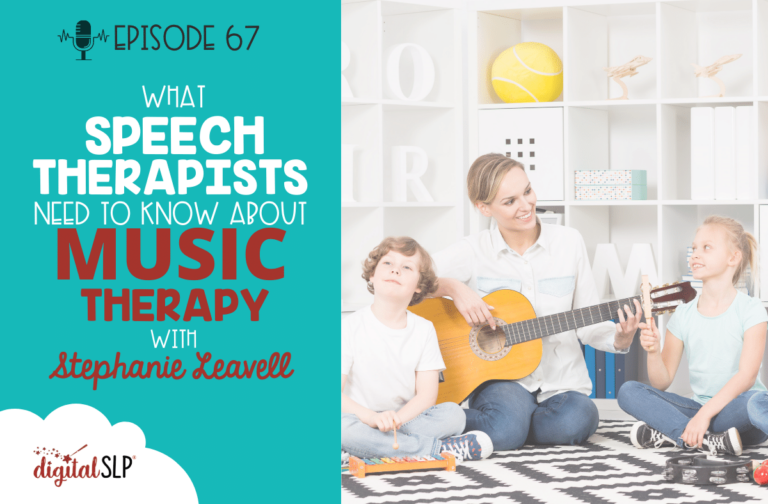



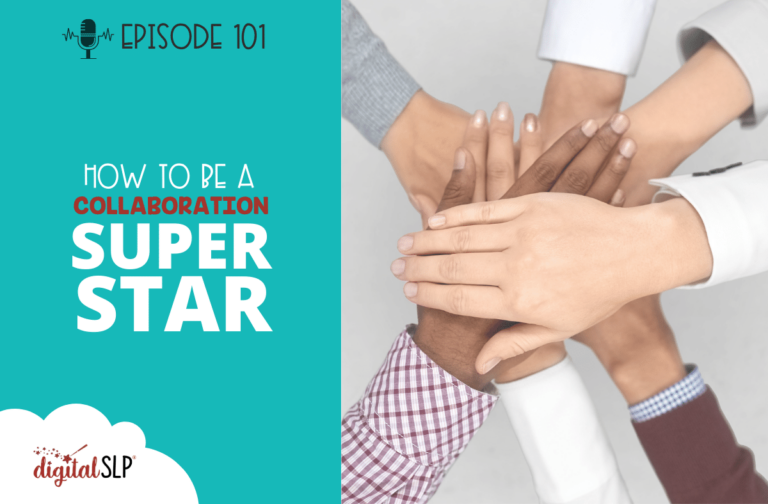
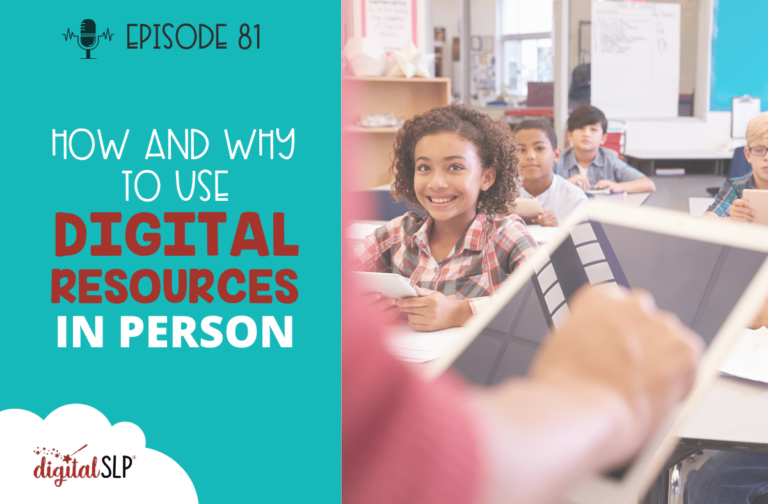
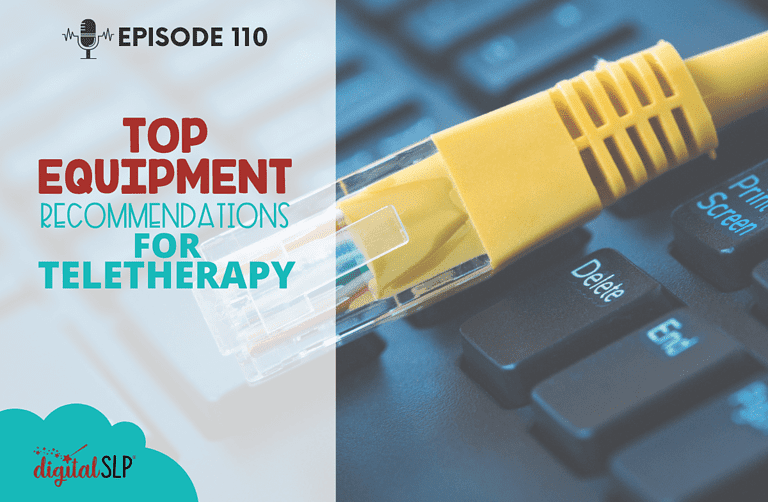
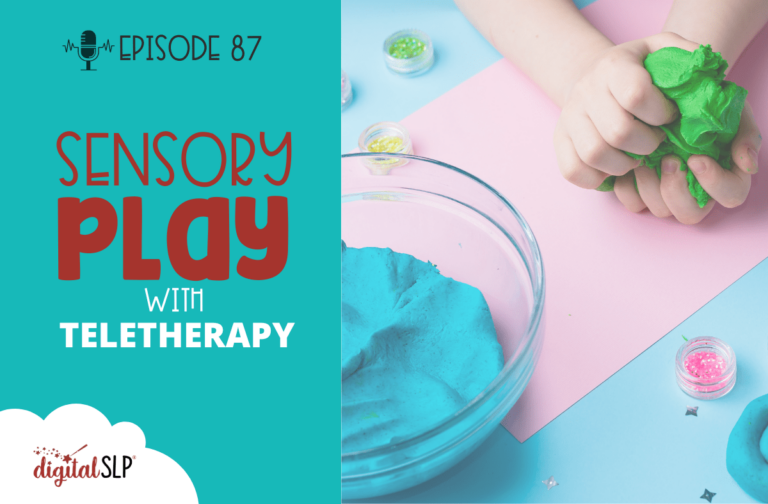
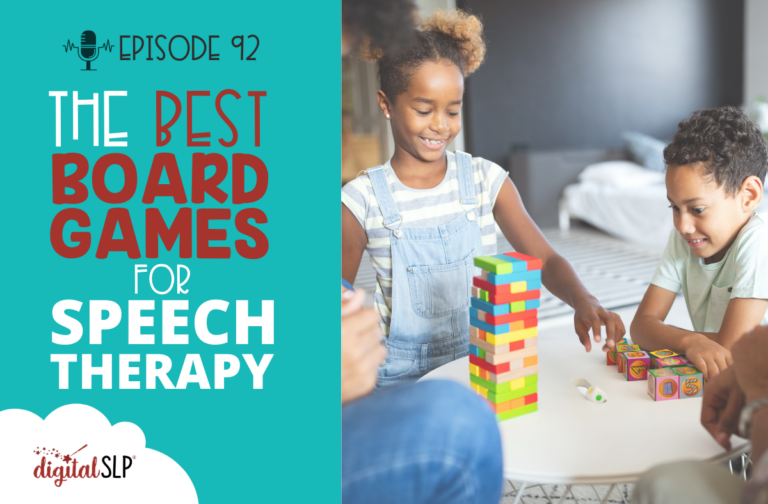
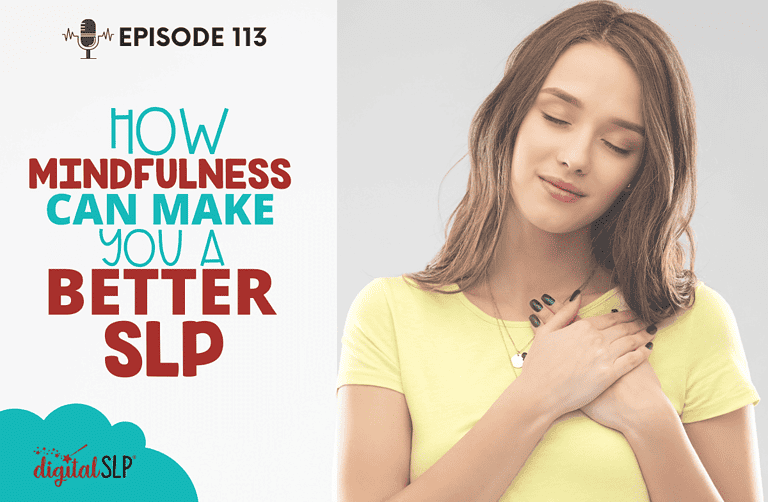

Recent Comments